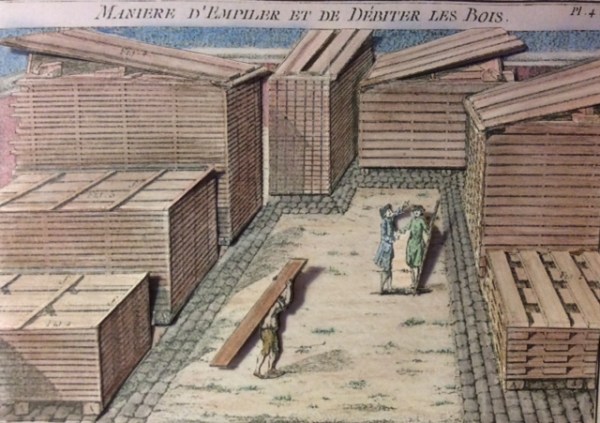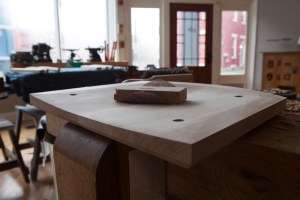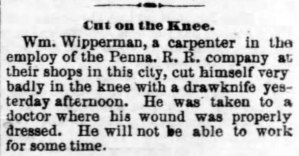How to Stack and Preserve Wood, Plate 4 –

Although the wood which one chooses has by itself all the required qualities, it is still necessary to watch out for its preservation. Since wood for woodworking should not be used except very dry, it is of the final consequence to woodworkers to always be well provisioned with wood of all types, which they keep and dry in their yard before using them.
They should also take care that their yard not be placed too low, nor planted with grass, because the falling and gathering of leaves will prevent the run off of water, which could ruin the wood pile coverings and also the base of a woodpile.
The terrain occupied by the woodpiles should be higher than the rest of the yard, so that water does not collect there. It must be well set up and leveled, after which you put on top some pieces of wood side A, which we call chantier [or beam/timber spacers] which has a length the same as the width of the pile – ordinarily 4 feet, although sometimes they make them wider. You make them the greatest thickness possible, so that they make the pile taller with the most possible spaces between the boards.
You put the spacers distant from each other about 3 feet. Their topsides should be squared and straight, after which you pile the wood on top, after having taken the precaution of putting the worst planks on the lowest level to save the better woods from ground moisture.
— Translation from the forthcoming “Roubo on Furniture.” Colored plate by Suzanne Ellison.



